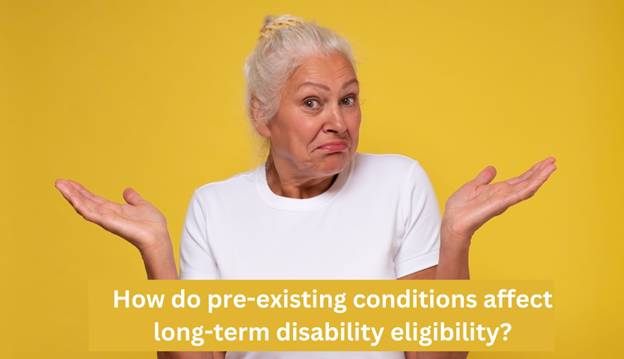Articles
Disability Advice from an attorney with decades of experience with disability benefits.

2025 Social Security COLA Increase
If you receive Social Security disability benefits, whether that’s Social Security Disability Insurance (SSDI) or Supplemental Security Income (SSI), a critical annual update is the Cost-of-Living Adjustment (COLA). This is

Step-by-Step Guide to Apply for Long-Term Disability
Navigating the complexities of applying for long-term disability benefits can often feel overwhelming. It involves understanding eligibility criteria, gathering the necessary documentation, and following specific procedures outlined by insurance providers

8 Possible Reasons Your Disability Benefits Were Cut Off
It may come as a surprise to some people when they suddenly find their Social Security Disability benefits cut off. There are many reasons why this may happen. Unfortunately, the

How to Apply for Social Security Disability: A Step-by-Step Guide
If you or someone you know is struggling with a disability that prevents you from working, you may be entitled to Social Security Disability Insurance benefits. However, navigating the complex

A Guide to Appealing a Denied Long-Term Disability Claim
Navigating the complexities of long-term disability claims can often feel like an uphill battle, especially when faced with a denial. Understanding your rights and the steps involved in the long-term

Do You Need a Social Security Disability Lawyer?
If you’re filing for Social Security Disability Insurance (SSDI), you may have come across numerous legal services offering to assist you with your application. This may prompt you to wonder

Conditions That Frequently Qualify for Long-Term Disability Benefits
Embarking on the journey to secure long-term disability benefits can often feel like venturing into uncharted territory. With many medical conditions and the complexities surrounding eligibility criteria, many people are

Preparing for Success: Your Guide to Disability Hearings
Embarking on the journey toward securing your future in the face of health challenges can feel overwhelming. The path is often filled with complex procedures and daunting legal landscapes requiring

The Crucial Role of Healthcare Professionals in Long-Term Disability Claims
The journey through long-term disability claims often unfolds in a complex landscape where the guidance and expertise of healthcare professionals become indispensable. These dedicated individuals provide the necessary medical care

Can Long-Term Disability Benefits Be Garnished?
Understanding the complex landscape of financial support and legal constraints can be a daunting task for individuals relying on long-term disability benefits. The process and implications of having these benefits

Navigating Pitfalls: Common Mistakes to Avoid in Long-Term Disability Applications
Embarking on securing long-term disability benefits can often feel like navigating through a dense, uncharted forest, where every step must be taken with caution and precision. The process is fraught

Understanding the Review Process for Long-Term Disability Claims
Embarking on the journey to secure long-term disability benefits can often feel like venturing into a complex maze filled with legal and procedural intricacies. This process, essential yet daunting for

Leveraging Technology for Improved Long-Term Disability Claim Management
In an era where digital advancements are transforming every sector, long-term disability claim management is also witnessing a significant overhaul. The integration of cutting-edge technologies is streamlining processes, making them

Group vs. Individual Long-Term Disability Policies: Key Differences Explained
When safeguarding your income in the event of a disability, understanding the differences between the protection options available is crucial. The landscape of long-term disability insurance is dotted with various

Protecting Your Rights: Long-Term Disability in the Workplace
When employed, unforeseen health challenges can dramatically alter one’s career trajectory and livelihood. Facing a long-term disability presents not only physical and emotional hurdles but also complex legal and workplace

Pre-Existing Conditions and Long-Term Disability Eligibility: A Comprehensive Overview
Untangling the intricate relationship between pre-existing conditions and eligibility for long-term disability benefits can often feel like a complex puzzle. With various rules and stipulations set by insurance policies and

Next Steps: Actions to Take If Your Long-Term Disability Benefits Are Terminated
Facing the sudden termination of long-term disability benefits can feel like a significant setback, leaving many unsure of where to turn or what steps to take next. This moment often

Navigating the Intersection of Long-Term Disability Benefits and Other Income Sources
Navigating the complex landscape of financial support during long-term disability requires a careful balancing act. It is a journey marked by a web of policies, varying eligibility criteria, and the

Documenting Your Case: Best Practices for Long-Term Disability Claims
Embarking to secure long-term disability benefits can often feel like traversing a complex labyrinth, where each turn and corner demands meticulous attention to detail and unwavering patience. The process is

A Global Perspective on Long-Term Disability Insurance Variations
Exploring the intricate landscape of long-term disability insurance across different countries reveals a complex tapestry of policies, benefits, and coverage criteria. This diversity stems from varied socio-economic structures, cultural norms,
